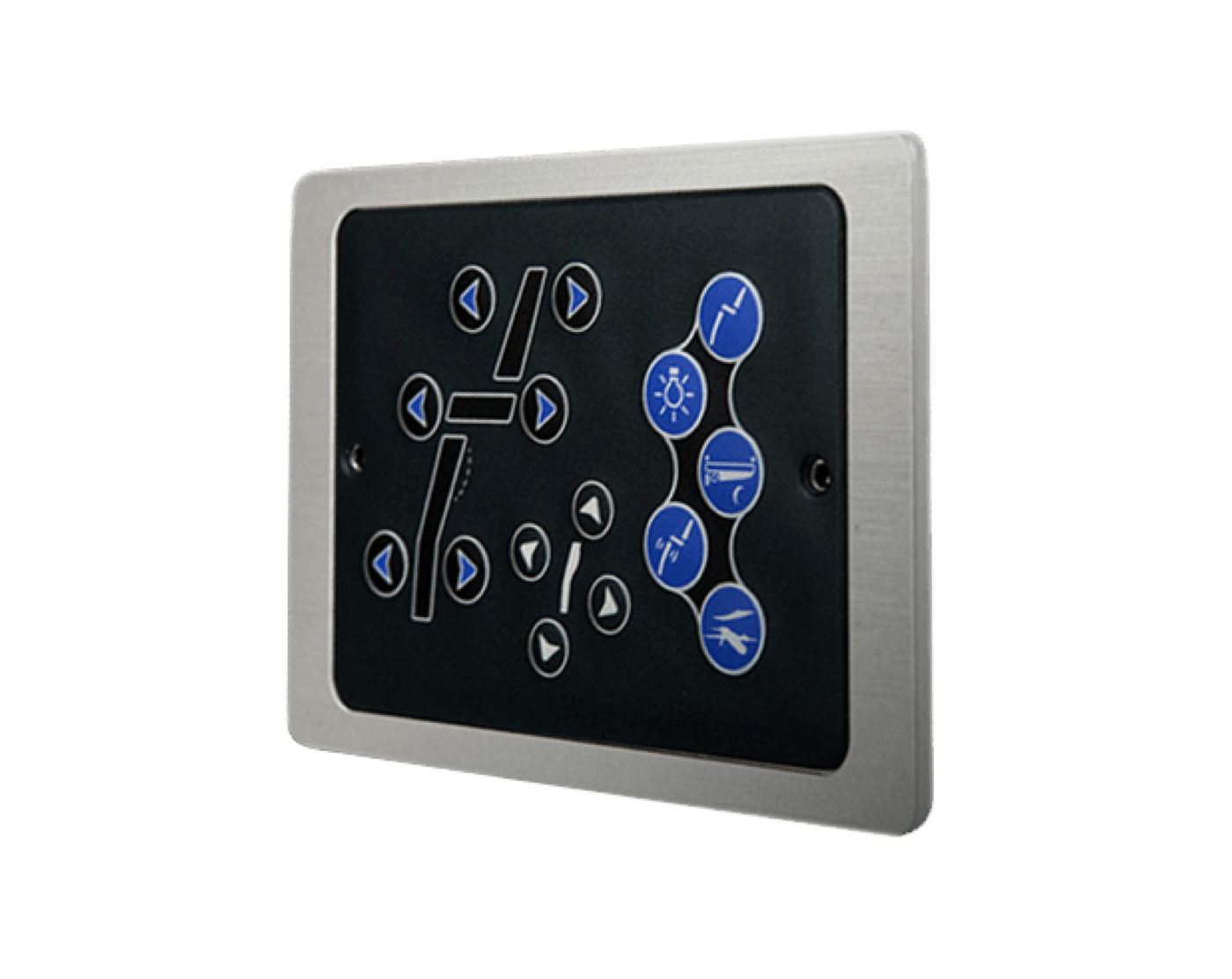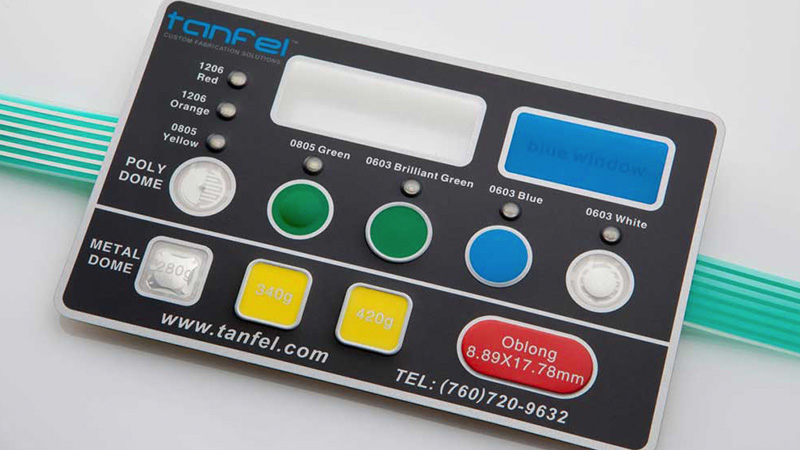Understanding the Significance of Membrane Switches in Interface
Membrane switches are essential components in the layout of efficient user interfaces, assisting in not only functionality yet additionally improving aesthetic allure and user interaction. Their distinct functions, such as resistance to environmental factors and adjustable layouts, make them appropriate for a diverse selection of applications throughout several industries. As we discover the different advantages and future trends connected with Membrane technology, it becomes clear that these switches are much more than just elements; they represent a convergence of development and functionality. The ramifications of this innovation on customer experience are worth examining further.
What Are Membrane Switches?

The spacer layer, which includes sticky homes, enables the separation of the circuit layer from the overlay, guaranteeing that the switch continues to be in a non-activated state up until pushed. When pressure is related to the overlay, it presses the spacer layer, bridging the space and finishing the circuit in the underlying layer. This layout not just reduces the physical space required for conventional mechanical switches yet likewise enhances the resilience of the gadget, as Membrane buttons are normally resistant to dirt, dampness, and other environmental variables.
Frequently found in applications varying from consumer electronic devices to clinical tools, Membrane buttons are important to modern technology, giving a straightforward and effective user interface that lines up with contemporary design demands.
Benefits of Membrane Buttons
While countless switch modern technologies exist, Membrane Switches deal distinctive benefits that make them particularly desirable in various applications. Among the primary benefits of Membrane buttons is their small design, which enables space-saving executions in tools where realty is limited. Their thin profile not just improves visual charm however also assists in lightweight building and construction.
Another substantial benefit is their resistance to environmental variables. Membrane switches are generally secured against moisture, dirt, and impurities, making them optimal for use in requiring atmospheres, such as medical gadgets and commercial devices. This resilience prolongs the life-span of the button, reducing upkeep expenses and boosting reliability.
Additionally, Membrane switches can be personalized to satisfy particular design demands, including unique graphics and colors that enhance individual interaction. Their responsive responses alternatives can likewise be customized to give a satisfying user experience. Additionally, Membrane buttons are cost-effective, especially in high-volume applications, as they can be created efficiently.
Applications in Numerous Industries

In the consumer electronic devices field, Membrane buttons are prevalent in devices such as microwaves, washing makers, and remotes. Their tactile comments and visual alternatives boost user experience while supplying a streamlined, modern-day appearance. In addition, auto manufacturers utilize Membrane buttons in dashboard controls and infotainment systems, where area is limited, and individual interaction is important.
Furthermore, the industrial market leverages Membrane switches in control panels for machinery and tools, permitting user-friendly operation in frequently harsh environments. Their resistance to chemicals and moisture ensures longevity and reliability in these applications. Overall, the adaptability of Membrane Switches contributes dramatically to their prevalent usage, making them indispensable in various technological domains.
Design Factors To Consider for Membrane Buttons

When creating Membrane buttons, numerous essential considerations must be taken into consideration to make certain optimum performance and user experience. The selection of products is crucial; picking long lasting, top quality substratums can enhance the button's longevity and resistance to ecological aspects such as moisture and temperature level changes.
Second of all, the style of the visuals overlay must prioritize clearness and ease of use. Symbols and text must be understandable, and the layout should help with user-friendly interaction (membrane switches). In addition, tactile responses is crucial; integrating a responsive dome or other devices can enhance the individual experience by offering physical verification of activation
Another crucial factor is the button's electrical efficiency. Designers need to guarantee that the conductive traces are correctly made to minimize resistance and prevent signal disturbance. This involves examining the required actuation force and making certain compatibility with the electronic elements they will certainly user interface with.

Future Trends in Membrane Modern Technology
As technology continues to advancement, Membrane buttons are positioned to develop dramatically, driven by developments in products and manufacturing strategies. One emerging trend is the unification of innovative materials, such as conductive inks and flexible substratums, which boost resilience and minimize the total weight of Membrane buttons. These read what he said products not only boost the tactile reaction however additionally permit the design of switches that can endure harsher ecological problems.
In addition, the combination of touch-sensitive technologies is transforming conventional Membrane Switches into even more interactive user interfaces. Capacitive touch sensing units installed within Membrane button panels can supply a more intuitive and responsive user experience, straightening with the expanding demand for sleek, contemporary styles in consumer electronics.
In addition, advancements in printing techniques, such as digital and 3D printing, enable rapid prototyping and personalization of Membrane buttons. This versatility permits suppliers to react faster to market demands and consumer choices.
Last but not least, sustainability is ending up being a considerable focus, with manufacturers exploring eco-friendly products and procedures. As these trends unfold, the future of Membrane modern technology promises improved performance, visual charm, and ecological duty, solidifying their function in innovative user interfaces throughout different industries.
Final Thought
In conclusion, Membrane Switches stand for a vital part in the style of customer interfaces, combining performance with visual versatility. As find here innovations in innovation i was reading this proceed, the evolution of Membrane buttons is expected to additional improve user interfaces, driving development and enhancing usability in a significantly complex technical landscape.
Membrane switches are indispensable elements in the style of reliable user interfaces, helping with not just capability however also improving aesthetic allure and user communication.Membrane Switches offer as an essential element in various individual interfaces, helping with a seamless communication in between users and digital devices.While countless switch technologies exist, Membrane Switches deal distinctive advantages that make them particularly preferable in numerous applications.Moreover, Membrane switches can be tailored to meet specific style requirements, incorporating unique graphics and colors that enhance individual communication.In verdict, Membrane Switches represent a crucial element in the style of individual interfaces, integrating performance with aesthetic flexibility.